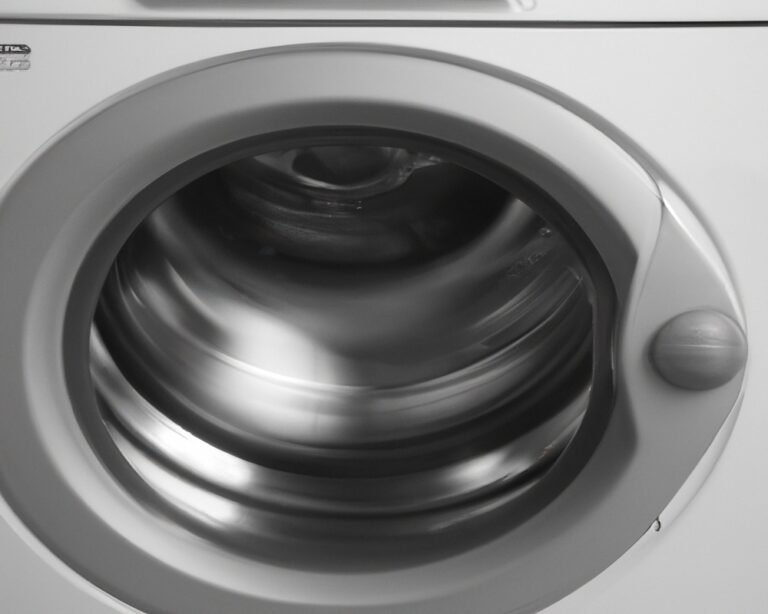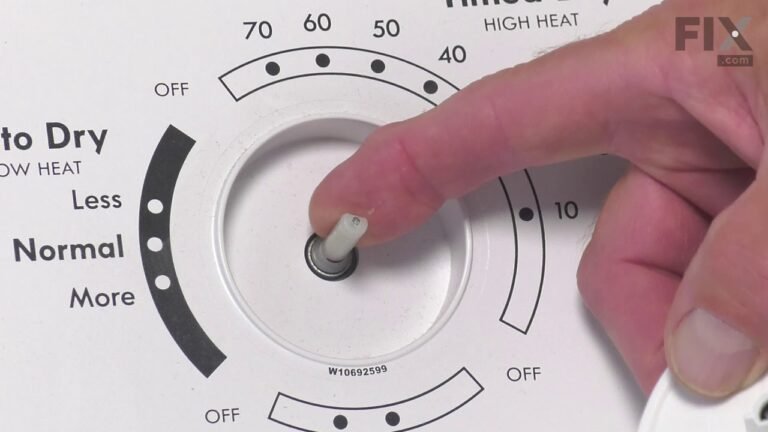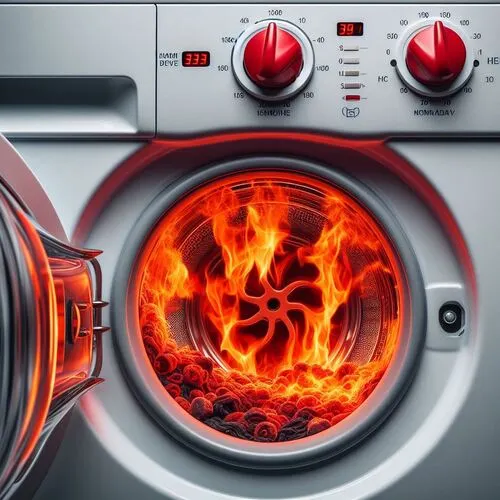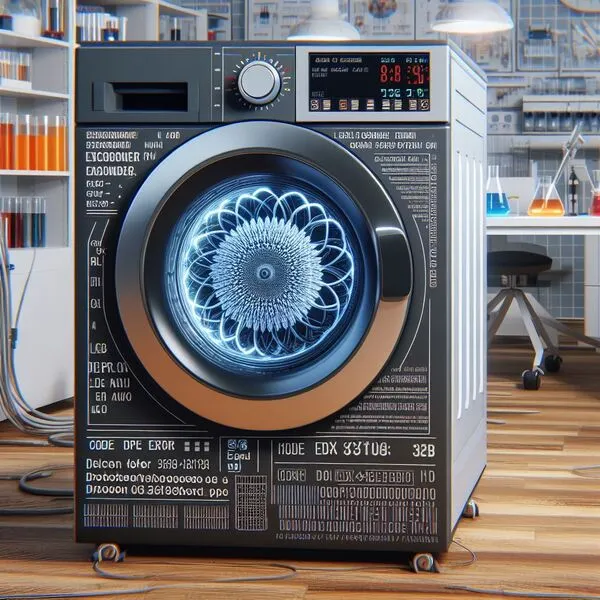Understanding Electric Dryer Amps: A Comprehensive Overview
Electric dryers have become indispensable appliances in modern households, offering convenience and efficiency in laundry care. However, to harness their full potential and ensure safe operation, it is essential to grasp a crucial aspect of their electrical setup: electric dryer amps. In this comprehensive guide, we delve into the fundamentals of electric dryer amps, their significance in home appliances, and how they impact energy efficiency.
From deciphering the relationship between amps, volts, and watts to exploring the diverse types of electric dryers available, we aim to equip you with a deep understanding of these electrical parameters. Whether you are a homeowner seeking to optimize your dryer’s performance, a business owner managing on-premises laundry facilities, or simply a curious individual eager to learn, this guide provides valuable insights and practical knowledge.
What are Electric Dryer Amps, and why are they important in home appliances?
Electric dryer amps refer to the measurement of electrical current that flows through the dryer during operation. They play a crucial role in determining the dryer’s power consumption and performance. Understanding electric dryer amps is essential for ensuring proper electrical installation check how to install an electric dryer , preventing circuit overload, and optimizing energy efficiency.
Fundamentals of Electric Dryer Amps

What is the definition of Amps (Amperes), and how do they relate to Volts and Watts?
Amps, or Amperes, are the units used to measure electrical current. In the context of electric dryers, amps indicate the rate of electricity flowing through the dryer’s circuits. Amps are related to volts (voltage) and watts (power) through Ohm’s law. The formula is Amps = Watts / Volts. Knowing this relationship helps us understand the electrical requirements of the dryer and the corresponding circuitry needed.
How is the Current Draw in Electric Dryers determined?
The current draw in electric dryers is determined by the Electric Dryer Wattage rating of the dryer’s heating element and the motor. The heating element requires a substantial amount of power to generate heat, while the motor also draws current for spinning the drum and operating various components. Additionally, the control panel and display also contribute to the overall current consumption.
Types of Electric Dryers
What are the differences between Electric Vented Dryers, Electric Ventless (Condenser or Heat Pump) Dryers, and Hybrid Electric-Gas Dryers?
Electric dryers come in various types, each with its unique characteristics. Electric vented dryers use hot air to dry clothes and require proper venting to release moisture. Ventless dryers, such as condenser and heat pump dryers, do not need external venting, making them more flexible in installation. Hybrid electric-gas dryers combine the efficiency of electric drying with the cost-effectiveness of gas heating.
Electrical Requirements for Electric Dryers
What is the standard Voltage and Frequency required for Electric Dryers?
Most residential electric dryers operate on a standard voltage of 240 volts and a frequency of 60 Hz. However, it’s essential to verify the specific electrical requirements for your dryer model as they may vary slightly.
Why is it important to have Dedicated Circuits for Electric Dryers?
Electric dryers require dedicated circuits to handle their high power demands. Dedicated circuits ensure that the dryer does not share electrical capacity with other appliances, reducing the risk of circuit overload and potential safety hazards.
How to choose the right Circuit Breaker and Wire Gauge for Electric Dryers?
Selecting the appropriate circuit breaker and wire gauge is crucial for safe and efficient dryer operation. The breaker should match the dryer’s amp rating, and the wire gauge should be sufficient to handle the current without overheating.
Determining Electric Dryer Amps
How do you calculate the Total Amps Draw for an Electric Dryer?
To calculate the total amps draw, add up the amps used by the heating element, motor, control panel, and other components. This information can usually be found in the dryer’s user manual or specification sheet.
What factors influence the Amp Ratings in Residential and Commercial Electric Dryers?
The amp ratings in electric dryers can vary based on the dryer’s size, capacity, and efficiency. Residential electric dryers typically have lower amp ratings compared to commercial dryers used in on-premises laundry facilities or coin-operated laundromats.
Typical Amp Ratings for Electric Dryers
What are the typical Amp Ratings for Compact and Full-Size Residential Electric Dryers?
Compact residential electric dryers usually have amp ratings ranging from 20 to 30 amps, while full-size dryers typically fall within the 30 to 50-amp range.
How do the Amp Ratings differ in On-Premises Laundry (OPL) and Coin-Operated Commercial Electric Dryers?
On-Premises Laundry (OPL) dryers used in commercial settings may have higher amp ratings, typically ranging from 50 to 60 amps or more. Coin-operated commercial dryers generally fall within similar amp ranges.
How Many Amps Does An Electric Dryer Use?
Determining the amps used by an electric dryer is essential for ensuring safe and efficient operation. The amp rating of a dryer depends on its voltage and power requirements, which vary based on the dryer’s size, heating element capacity, and motor efficiency.
How Many Amps Does a 240V Electric Dryers Use?
Electric dryers operating on 240 volts typically have higher wattage heating elements and motors compared to those running on lower voltages. As a result, 240V electric dryers generally have amp ratings in the range of 24 to 30 amps. Larger and more powerful models might require higher amp ratings, up to 40 or 50 amps. Always refer to the dryer’s user manual or specification sheet for the precise amp rating.
How Many Amps Does a 220V Electric Dryers Use?
Dryers rated for 220 volts operate similarly to 240V dryers and typically have comparable amp ratings. Most 220V electric dryers will fall within the range of 24 to 30 amps, with larger or more energy-demanding models requiring higher amps.
How Many Amps Does a 110V / 120V Electric Dryers Use?
Electric dryers designed to operate on standard household outlets of 110V or 120V draw higher amps compared to higher voltage dryers. These compact or portable dryers usually have amp ratings ranging from 15 to 20 amps.
Energy Efficiency and Amp Ratings
Energy-efficient electric dryers with advanced technologies and better insulation may have lower amp ratings while delivering the same drying performance. If energy efficiency is a priority, consider looking for dryers with Energy Star certifications, which meet specific energy-saving standards set by the Environmental Protection Agency (EPA).
Importance of Proper Electrical Setup
To ensure the safe and optimal performance of your electric dryer, it is crucial to have the proper electrical setup. This includes using the correct voltage, amperage, and dedicated circuits. Using an electric dryer with an inadequate electrical system can lead to circuit overload, potential fire hazards, and dryer malfunction.
Consulting a Qualified Electrician
If you are uncertain about the electrical requirements or installation of your electric dryer, it is always best to consult with a qualified electrician. They can assess your electrical system’s capacity, make any necessary adjustments, and ensure that your dryer operates safely and efficiently.
In conclusion, the number of amps an electric dryer uses depends on its voltage, size, and energy efficiency. Electric dryers operating on 240V or 220V typically have amp ratings in the range of 24 to 30 amps, while those designed for 110V / 120V household outlets draw higher amps, typically ranging from 15 to 20 amps. Proper electrical setup and consultation with an electrician are essential to ensure safe and efficient operation of your electric dryer.
Factors Affecting Electric Dryer Amps
How does the Load Size and Weight affect the Amp Draw in Electric Dryers?
Larger loads and heavier garments require more energy to dry, leading to higher amp draw during the drying process.
Does the Moisture Content in Clothes impact the Amp Ratings?
Clothes with higher moisture content may require more drying time, resulting in increased energy consumption and amp draw.
How does the Dryer’s Age and Maintenance influence its Amp Draw?
Older dryers or those with poor maintenance may experience reduced efficiency, leading to higher amp draw during operation.
Safety Considerations
What safety precautions should you take to prevent Circuit Overload and Tripping?
To prevent circuit overload and tripping, ensure that the dryer is connected to a dedicated circuit with the appropriate amp rating. Avoid running other high-power appliances simultaneously on the same circuit.
Why is Proper Electrical Grounding crucial for Electric Dryers?
Proper electrical grounding protects against electrical shock and ensures the safe dissipation of excess electrical energy.
How can regular Maintenance and Inspection enhance safety?
Regular maintenance and inspection help identify potential issues early on, preventing safety hazards and optimizing dryer performance.
Energy Efficiency and Electric Dryer Amps
Why is Energy Efficiency important in Electric Dryers?
Energy-efficient dryers consume less electricity, reducing energy costs and environmental impact.
How are Electric Dryers rated for Energy Efficiency (Energy Star)?
Energy Star ratings indicate that a dryer meets or exceeds specific energy efficiency standards set by the Environmental Protection Agency (EPA). Look for Energy Star-rated dryers for optimal energy savings.
What measures can you take to reduce Energy Consumption in Electric Dryers?
To reduce energy consumption, consider using lower heat settings, fully loading the dryer, and ensuring proper venting for efficient airflow.
Troubleshooting Electric Dryer Amp Issues
What could be causing the Circuit Breaker to trip frequently?
Frequent circuit breaker tripping may result from overloading the circuit, a faulty breaker, or a malfunctioning dryer component.
How do you address Abnormal Amp Readings in Electric Dryers?
Abnormal amp readings could be a sign of a damaged heating element, motor, or faulty electrical connections. It’s essential to seek professional inspection and repair.
What steps should you take if the Motor or Heating Element malfunctions?
If the motor or heating element malfunctions, it’s crucial to disconnect power immediately and consult a qualified technician for repair or replacement.
Comparison with Gas Dryers
How do Electric Dryers compare to Gas Dryers in terms of Energy Consumption?
Electric dryers generally consume more energy compared to gas dryers, which use natural gas or propane for heating. Read Can You Convert Electric Dryer to Gas post.
What are the advantages and disadvantages of each type?
Electric dryers are easier to install but may have higher operating costs. Gas dryers are more energy-efficient but require a gas line for operation.
Conclusion
Understanding electric dryer amps is vital for maximizing performance, ensuring safety, and optimizing energy efficiency. This guide covered the fundamentals of amps, their importance in different dryer types, and the significance of proper electrical setup. By making informed decisions and following manufacturer guidelines, you can enjoy a more efficient and sustainable laundry experience. Remember to consult qualified electricians for any installations or adjustments. Let’s harness knowledge to enhance our electric dryers for a better future. Happy drying!
FAQ About Electric Dryer Amps
Are dryers 30 or 50 amps?
Dryers can have varying amp ratings depending on their size, heating element capacity, and motor efficiency. Most residential electric dryers typically have amp ratings in the range of 24 to 30 amps. Larger and more powerful models might require higher amp ratings, up to 40 or 50 amps.
How many amps does a 220 dryer use?
Dryers rated for 220 volts typically have similar amp ratings as those operating on 240 volts. Most 220V electric dryers will fall within the range of 24 to 30 amps, with larger models potentially requiring higher amps.
How many amps does a 240 volt dryer use?
Electric dryers operating on 240 volts generally have amp ratings in the range of 24 to 30 amps. As mentioned earlier, larger and more powerful models might have higher amp ratings, up to 40 or 50 amps.
How many amps does an electric dryer need?
The amps required by an electric dryer depend on its wattage, which, in turn, depends on the heating element and motor. Most electric dryers will need an electrical circuit capable of handling 24 to 30 amps.
Can I run a 30 amp dryer on a 20 amp breaker?
No, it is not safe to run a 30 amp dryer on a 20 amp breaker. The breaker should match the dryer’s amp rating to handle the electrical load safely. Using a lower amp breaker can lead to circuit overload, tripping, and potential fire hazards. Always ensure the breaker’s amp rating matches or exceeds the dryer’s amp requirements.
Does a dryer need a 20 amp outlet?
Yes, most residential electric dryers require a 20 amp outlet to match their amp rating. It is crucial to have the correct outlet and dedicated circuit for the dryer to operate safely and efficiently. Consult a qualified electrician to ensure the proper electrical setup for your dryer.







